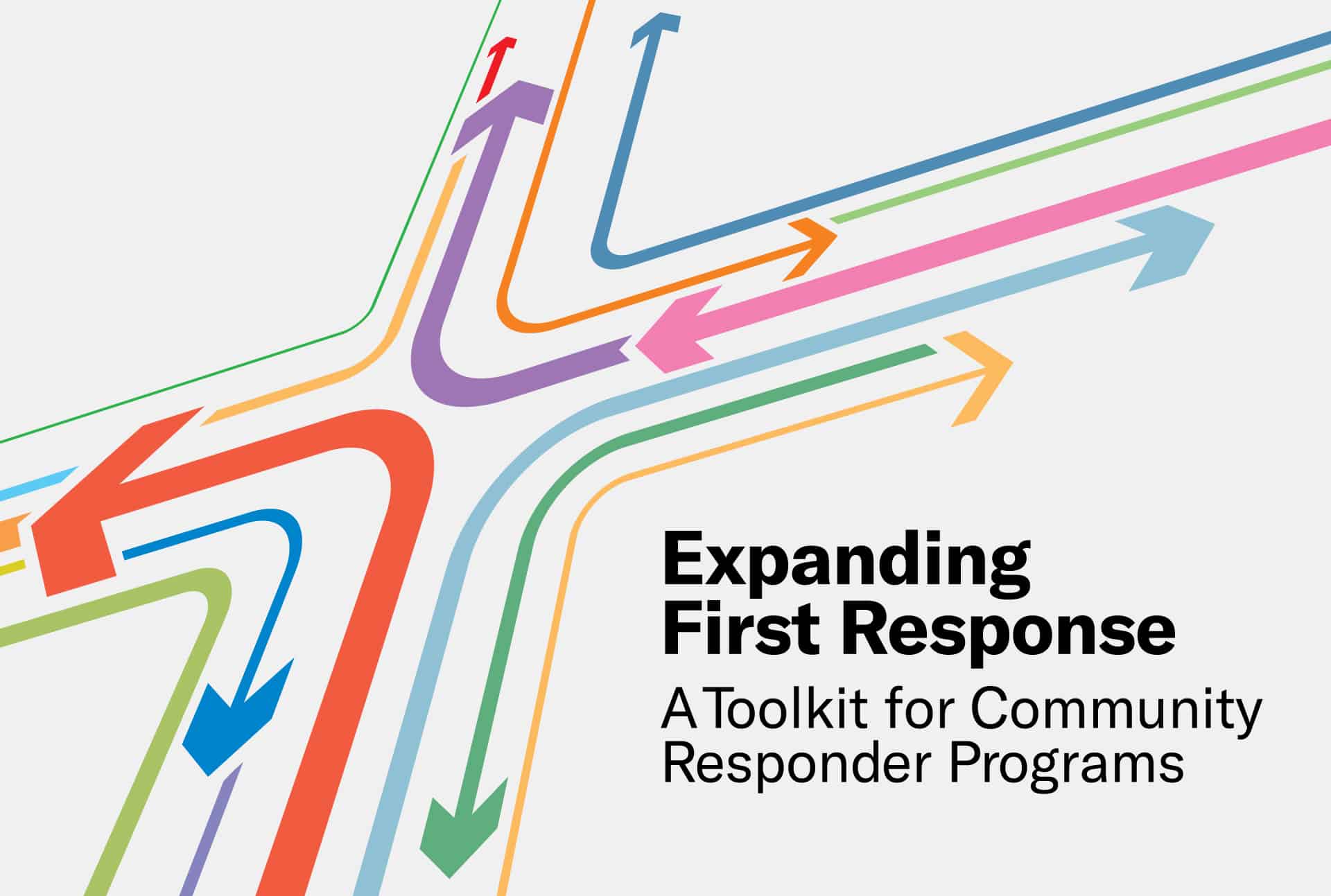
Community responder programs position health professionals and trained crisis staff as first responders to behavioral health crises and social disturbances. These teams provide immediate assistance to people in crisis, facilitate connections to support services, conduct wellness checks, and more. However, one of the biggest barriers to implementing these programs continues to be a misperception that behavioral health crisis calls are inherently dangerous and likely to become violent. This has led many in the public to believe that community responders are at substantial risk of injury, particularly because they are not armed like police officers. Data on staff safety and injury were collected from community responder programs in seven U.S. cities—Eugene, OR; Olympia, WA; Denver, CO; San Francisco, CA; Rochester, NY; Portland, OR; and New York, NY—as a foundation for the information below.
This article highlights common myths about the safety of community responder teams and provides data and information from existing programs to address these misperceptions.
Myth 1: People with behavioral health conditions are likely to become violent when confronted, so unarmed first responders, like community responders, are at grave risk of injury.
Fact: The relationship between violence and mental illness is nuanced, and public perception is often inaccurate. Research does not support the notion that people with behavioral health conditions become violent when confronted; only about 4 percent of violent crime is committed by people with mental illnesses. In fact, people with mental illnesses are more likely to be victims than to commit violent crimes.
Myth 2: Community responder teams frequently require police backup to protect responders from violence or injury.
Fact: Police backup is rarely requested by existing community responder teams, and when it is requested, it is more likely for mental health holds rather than for risks of violence. Existing data suggest that very few behavioral health-related 911 calls involve weapons or the risk of violence. For example, a 2019 study found that 84 percent of behavioral health-related 911 calls did not involve any type of violent behavior or the presence of weapons.
Existing data also suggest that community responder teams can attend to crisis calls safely without substantial risk of injury to staff members, service users, or third parties. Of more than 23,500 calls across the seven sites, only 0.014 percent involved the need for police backup
Myth 3: Police are called to handle behavioral health crisis calls and social disturbances because they are the only ones with adequate training and resources to respond to these calls.
Fact: People call 911 for an array of situations, and those calls are frequently answered the same way: with the arrival of an armed police officer. Racial biases may influence people to call police more often on Black, Indigenous, and People of Color (BIPOC)—regardless of whether they are experiencing a behavioral health crisis—leading to increased and disproportionate law enforcement involvement in certain communities. Further, armed police officers showing up to address mental health calls reinforces stigma and the misperception that behavioral health crises are violent and criminal. Despite such realities, police are typically called to address these situations, not because they are best suited to resolve them, but because many communities lack funding and resources for other alternatives. Police officers in many communities agree that other first responders could assist to free up their time to focus on public safety, including violent crime.
The Importance of Data Collection in Continuing to Demystify Public Perception
States and local communities can help address misperceptions about safety and community responder models by improving data collection. Consistent and accurate data should be collected on crisis calls currently routed to police to determine the rates of violence and weapons present when law enforcement responds to these calls. States and local communities also need to establish a shared definition of violence to ensure consistent data collection. Currently, varied definitions across the U.S. make it difficult to conduct comprehensive analyses. Additionally, communities should track each 911 call from initial contact to the end response to determine whether operators are receiving accurate information to help determine the most appropriate first responder. For example, someone may call 911 and say that a weapon is present, but upon arrival, police determine that there is no weapon on the scene.
Key metrics that community responder programs should collect include:
- Rates of requests for police backup, separating calls for backup due to the perception of danger, risk, or violence, from requests for other reasons.
- Staff injuries (separating out type of injuries, injuries caused by clients, and injuries caused by other factors). This data should be kept as a ratio or percentage of injuries relevant to the total number of calls.
- Where injuries take place (e.g., in public locations or in private homes).
These programs should also track environmental hazards that may increase the risk of staff injury or illness, such as inadequate COVID-19 protection protocols. Additionally, strategies to reduce risk of violence or injury, like staff training or the use of special equipment, should be tracked.
Communities across the U.S. should also track and report criteria for dispatching existing community responder teams based on the types of calls responded to and the calls deemed more appropriate for an officer. These can help build an evidence base for best practices that jurisdictions can use to safely implement their own teams.
To learn more about community responder programs, visit the Expanding First Response Toolkit.
About the Author
 New Hampshire Continues Justice Reinvestment Effort to Improve Conditions for People Who Are High Utilizers of Criminal Justice and Behavioral Health Systems
Read More
New Hampshire Continues Justice Reinvestment Effort to Improve Conditions for People Who Are High Utilizers of Criminal Justice and Behavioral Health Systems
Read More
 New Hampshire Commission Reviews Final Policy Recommendations to Reduce Reliance on Incarceration as Part of Justice Reinvestment Initiative
Read More
New Hampshire Commission Reviews Final Policy Recommendations to Reduce Reliance on Incarceration as Part of Justice Reinvestment Initiative
Read More
 Three Things to Know About New Jersey’s Groundbreaking Community Response Legislation
Three Things to Know About New Jersey’s Groundbreaking Community Response Legislation
In response to growing calls for police reform in New Jersey, particularly following the shootings of Najee Seabrooks and Andrew Washington in March and August 2023, a coalition of law enforcement officials, mental health professionals, and community advocates partnered to explore public safety response alternatives.
Read More












